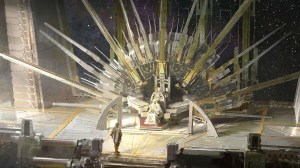NASA has another record to add to its books. This past week, the agency announced the Hubble Telescope managed to spot the farthest star it’s ever seen. Located reportedly 12.9 billion lightyears away, scientists are calling the star Earendel and suggest it’s so old, it may not even include the same materials located around this part of the universe.
Videos by ComicBook.com
“We almost didn’t believe it at first, it was so much farther than the previous most-distant, highest redshift star,” astronomer Brian Welch said. Welch is the lead author of the paper detailing the discovery, now available in the journal Nature. “Normally at these distances, entire galaxies look like small smudges, with the light from millions of stars blending together. The galaxy hosting this star has been magnified and distorted by gravitational lensing into a long crescent that we named the Sunrise Arc.”
Welch and his team suspect Earendel is between 50 and 500 times the size of our Sun and “millions of times” as bright, potentially even being one of the brightest stars on record. Because the star is so far away, scientists are technically seeing it as it was when the known universe was just seven-percent of its current age.
“Earendel existed so long ago that it may not have had all the same raw materials as the stars around us today,” Welch added. “Studying Earendel will be a window into an era of the universe that we are unfamiliar with, but that led to everything we do know. It’s like we’ve been reading a really interesting book, but we started with the second chapter, and now we will have a chance to see how it all got started.”
Now that researchers are going through the final steps in making NASA’s and the ESA’s James Webb Space Telescope operational, they hope to use the new tool to further research Earendel.
“With Webb we expect to confirm Earendel is indeed a star, as well as measure its brightness and temperature,” study co-author Dan Coe added. “We also expect to find the Sunrise Arc galaxy is lacking in heavy elements that form in subsequent generations of stars. This would suggest Earendel is a rare, massive metal-poor star.”
The record was previously held by a blue star named Icarus, after the classic Greek tale. That star is located some nine billion lightyears away from Earth.








